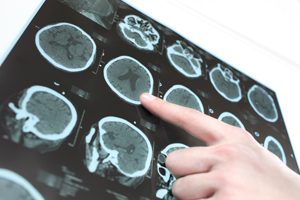What is a Stroke?
A stroke occurs when part of the brain is deprived of blood. The cells in the affected area will then begin to die due to a lack of oxygen. As the brain cells die, the abilities controlled by that part of the brain are lost. A person may experience partial paralysis, loss of speech, memory loss or weakness in one part of the body.
 The Facts
The Facts
About 130,000 people will die from stroke in the USA each year, making stroke the fifth leading cause of death in adults over the age of 35. Strokes are not always fatal; roughly 800,000 strokes occur across the States each year. However, many survivors will end up with a serious disability or physical impairment.
Types of Stroke
There are two types of stroke:
Hemorrhagic stroke
Only 15% of strokes are hemorrhagic but 40% of all deaths from stroke are caused by hemorrhagic strokes. Hemorrhagic strokes are caused by either a brain aneurysm or a leak from a weakened blood vessel. When a hemorrhagic stroke occurs, blood will flood the brain and cause swelling which will cause damage to brain cells and tissue.
Ischemic stroke
This is the most common form of stroke. An ischemic stroke occurs when a blood vessel transporting blood to the brain is blocked by a blood clot, preventing blood from reaching the brain.
Though they are not clinically considered to be strokes, Transient Ischemic Attacks (TIA) are often precursors to strokes. TIAs occur when blood is prevented from reaching the brain for a short period of time. A TIA may present with stroke-like symptoms and is considered a serious warning that a stroke will happen at a later point.
Risk Factors
It’s estimated that 80% of strokes could have been prevented. However not all risk factors can be controlled. Risk factors include:
- High blood pressure
- History of TIAs
- Diabetes
- Heart disease
- High cholesterol
- Obesity
- Smoking
- Excessive alcohol consumption
- Unhealthy diet
- Physical inactivity
- Smoking
- Age – risk doubles every ten years after 55
- Sex – strokes are more common in men but women are more likely to suffer a fatal stroke
- Race & ethnicity – Caucasians and Asians are the lowest risk groups
Signs and Symptoms
 It is possible for a stroke to develop gradually but more often than not a stroke will appear without any warning signs. Typically, a person suffering from a stroke will experience one or more of the following:
It is possible for a stroke to develop gradually but more often than not a stroke will appear without any warning signs. Typically, a person suffering from a stroke will experience one or more of the following:
- Numbness or weakness down one side of the body including in the face, arm and leg
- Difficulty speaking and comprehending the words of others
- Mental confusion
- Trouble seeing or blurry vision in one or both eyes
- Difficulty balancing , walking or coordinating the body
- Dizziness
- Sudden onset severe headache
FAST
The FAST method is a quick and easy way to identify if someone is having a stroke:
F – Face: is one side of the face drooping or numb? The smile test can confirm as an uneven smile may indicate a stroke is happening.
A – Arms: is one arm weak or numb? One arm drooping downwards when a person raises both may signal a stroke.
S– Speech: Slurred speech, trouble speaking or inability to repeat a simple sentence could point to a stroke.
T – Time/telephone: Call 911 straight away if someone has one or more of these symptoms, even if the symptoms ease or disappear. Take note of when the symptoms first appeared.
Side Effects of Stroke
The lasting effects a stroke has on a person will depend on the type of stroke they experienced and the part of the brain that was damaged.
Damage to the brain’s right side – A stroke that occurs on the right side of the brain will affect the left side of the body. Temporary or permanent side effects include:
- Paralysis down the body’s left side
- Trouble seeing and other vision problems
- Memory less
- Behavioral changes e.g. a person may become more childlike or impulsive
Damage to the brain’s left side – A stroke that occurs on the left side of the brain will affect the right side of the body. Temporary or permanent side effects include:
- Paralysis down the body’s right side
- Loss of speech or trouble speaking
- Memory loss
- Behavioral changes e.g. a person may become more reserved or cautious
Treatments are available for stroke. Many patients will go through physical therapy and rehab as part of their recuperation. However, the faster a stroke patient is treated, the better their chance of recovery.
Ashlee Alfred has over 12 years of experience in the fitness industry, and is the co-owner of BEFIT in Killeen, TX. At BEFIT, we are not just a “gym” and we don’t just “train” people. We are lifestyle coach’s, lifestyle mentors, and we can help you develop yourself to your optimal physical capacity through self empowerment, education, and lifestyle changes!
Learn more about BEFIT at their website, befitkilleen.com.
Reprinted from the BEFIT blog with permission from Ashlee Alfred,
